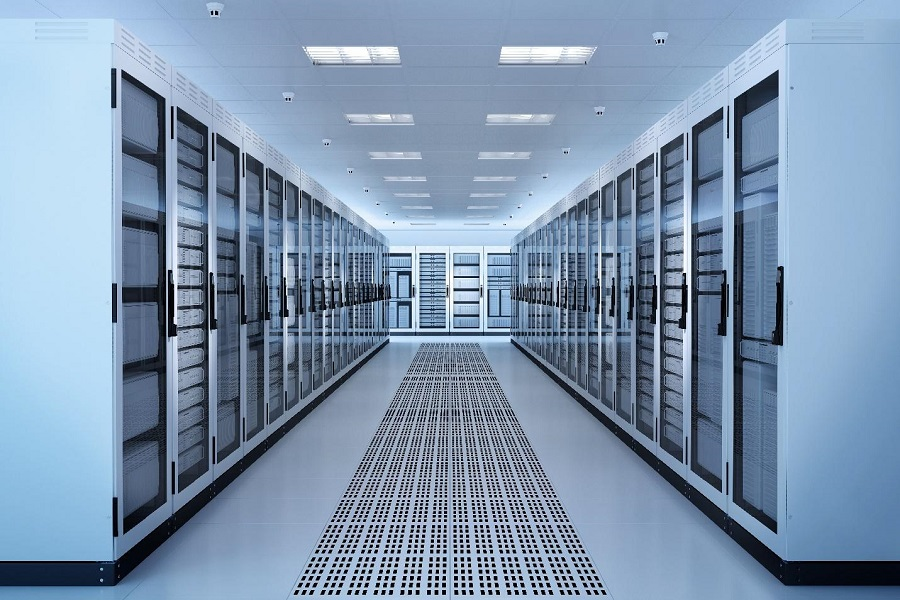
Data centers swallow extensive energy, especially if inefficiencies exist. That's why monitoring them with metrics like PUE is crucial. PUE of a data center is used to assess its performance and measure the impact of improvements.
Lowering PUE diminishes power usage and costs. But, the question is, “How can we calculate the PUE of a data center?” In this post, we'll get to know what Power Usage Effectiveness is, its formula, the calculation process and learn why it's crucial to minimize the PUE of a data center.
Table of Contents
How and When Should I Calculate the PUE of a Data Center?
Why Reducing PUE is Critical for Data Centers
Comparing PUE with Other Data Center Efficiency Metrics (CUE, WUE, and ERE)
Practical Tips for Reducing PUE
Power Usage Effectiveness (PUE) is described as a benchmark that compares the total energy consumption of a data center's facility infrastructure with the energy used by its IT equipment. Power Usage Effectiveness is calculated as follows:
PUE = Total facility energy usage / IT equipment energy usage
This PUE formula quantifies the overhead energy used for cooling, lighting, and support systems relative to the energy consumed by servers, storage devices, and networking equipment. A PUE of 1 indicates the utmost efficiency, where all energy is employed by IT operations. Values surpassing 1 demonstrate inefficiencies. Higher numbers indicate greater energy loss.
Data Center Infrastructure Efficiency (DCiE) complements PUE by portraying its reciprocal multiplied by a hundred.
DCiE = (1 / PUE) x 100)
This percentage metric vividly shows how efficiently a data center employs its energy resources.
For example:
| PUE | DCiE | Efficiency |
|---|---|---|
| 3.0 | 33% | Very low |
| 2.5 | 40% | Low |
| 2.0 | 50% | Average |
| 1.5 | 67% | Good |
| 1.2 | 83% | Excellent |
Higher DCiE values and lower PUE values are desirable as they illustrate sweetened efficiency, diminished energy costs, minimized environmental impact, and enhanced overall performance and dependability of the IT infrastructure.

Let’s go through a simple example:
Total Facility Energy Consumption: 1000 kWh
IT Equipment Energy Consumption: 800 kWh
Power Usage Effectiveness: PUE = 1000 kWh / 800 kWh = 1.25
This PUE value signifies that for every unit of IT energy, 0.25 units are lost to non-IT overhead.
To calculate the PUE in a data center, you can follow these steps:
The frequency of PUE calculation depends on data center size, infrastructure complexity, and efficiency goals. Generally, it's recommended that you calculate PUE monthly to monitor efficiency and notice deviations from anticipated consumption patterns.
Low PUE in data centers signal about efficient operations and minimum energy waste. It lessens costs and environmental impacts and heightens trustworthiness and IT performance. Also, lowering PUE helps data centers enrich their reputation on the market.
What's more, lowered PUE enables scalability without the need for additional energy and cooling infrastructure. The combination of these benefits makes it a critical objective for data centers to reduce their PUE as much as possible.
Other than PUE and DCiE, the following three metrics are also important in evaluating the performance of a data center:
ERE = Total reused energy / Total energy consumed
A lower ERE indicates more effective energy reuse, contributing to a lower overall environmental footprint.
WUE = Total water consumption / Total IT equipment energy consumption
Lower WUE values indicate more water-efficient cooling practices, which is crucial for sustainability, especially in arid regions.
CUE = Total emissions / Total IT equipment energy consumption
A lower CUE indicates a more environmentally friendly data center, with minimal carbon emissions per unit of IT energy usage.
To reduce PUE in a data center you'd need to optimize cooling and power distribution, upgrade the infrastructure, and consistently monitor energy consumption. Here are some actionable steps:
Optimize Cooling Systems. Using advanced cooling methods like liquid immersion can drastically cut energy costs.
Enhance Power Distribution. Efficient power usage from sources like renewable energy can improve PUE. Implement power metering and monitoring systems to track efficiency.
Regular Energy Audits. Routine audits help in identifying inefficiencies and opportunities for improvement.
We have showcased how critical it is to lower the PUE in a data center. To do so, one of the best techniques is to employ efficient cooling systems such as liquid immersion cooling, which is where BixBiT’s solutions excel. They improve results derived from the PUE formula, ensuring noticeable energy savings.
The company’s immersion cooling system can be employed in diverse data centers and mining farms. Additionally, BixBiT delivers BixBiT Cell and BixBiT Rack for home, small, and medium-sized businesses, in addition to BixBiT Container for mining hotels, and COOLANT, the specific immersion liquid of the company.
An ideal Power Usage Effectiveness is as close to 1.0 as possible, though achieving 1.0 is rare due to the need for cooling and other overhead.
PUE should be calculated monthly or quarterly, depending on the size and complexity of the data center.
PUE measures the ratio of total energy consumption in a data center to the energy used solely by IT equipment. It quantifies the efficiency of energy use by comparing how much energy goes to computing tasks versus overhead functions like cooling, lighting, and other facility operations. A lower PUE indicates better energy efficiency, with a greater proportion of energy devoted to IT operations rather than ancillary systems.
Utilize energy-efficient cooling, renewable energy sources, and regularly monitor Power Usage Effectiveness to identify inefficiencies.